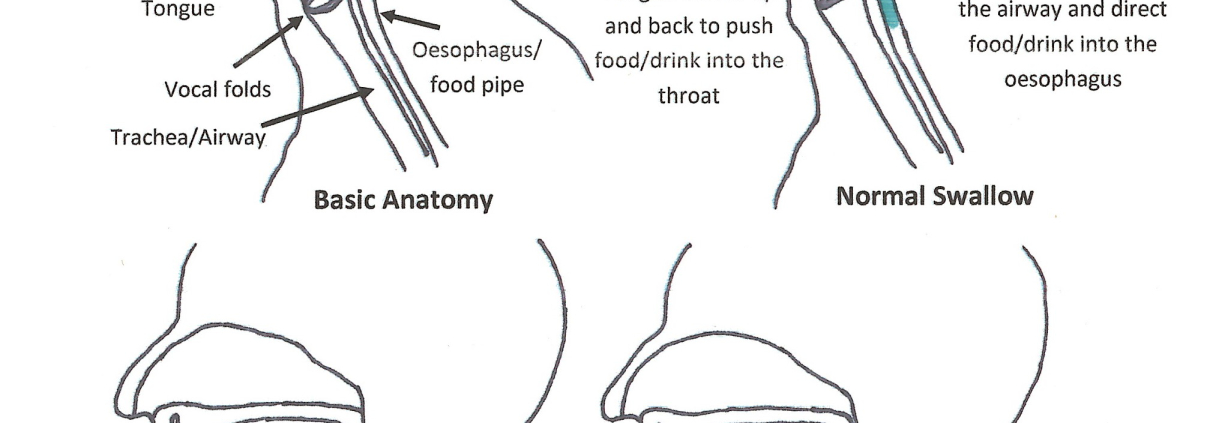A family asked me the other day if aspiration and dysphagia were similar and it got me thinking that as speech pathologists we often use terms that are as familiar to us as the clothes we wear or the foods we eat and we, at times, might forget to explain the nuances of what some of these terms mean. I thought I would write down some explanations to help if families are finding these terms hard to understand.
The following is borrowed from a fact sheet by Speech Pathology Australia and helps explain how swallowing works:
“The swallowing system is a tube in which a series of pumps and valves move food and drink from the mouth to the stomach. In the throat, the tube branches in two directions; down one, the food and drinks pass into the oesophagus on their way to the stomach, while the other branches off to the voice box and lungs and is used for breathing. With each swallow we hold our breath for around one second to make sure the food or drink travels down the correct tube to the stomach rather than the lungs. Swallowing uses 26 muscles and many nerves to coordinate the split second timing needed to safely swallow and mistimed movements can lead to food or drink ‘going down the wrong way’’.”
Dysphagia is an umbrella term for any swallowing difficulty that may occur at any stage of the process from holding food/drink in our mouth, chewing our food and preparing it for swallowing, sucking or drinking, through moving the food/fluid from our mouth down our throat to the stomach, or protecting our lungs from food “going down the wrong way”.
Dysphagia can occur at any stage of life from birth to adulthood and can have a short term impact or be life long. Often signs such as coughing, gagging or choking are the first signs we see that someone may be experiencing swallowing difficulties and most adults and children have experienced these at some stage when they have been distracted at mealtimes, not sitting still, talking or doing something else that makes it more difficult to eat and drink safely.
Sometimes people with dysphagia can have food or drink enter the top of their airway at the level of their larynx, which is also known as the voicebox, the front of this is more visible in men as the “Adam’s apple”. This is called laryngeal penetration. When this occurs, we often see coughing as the body attempts to eject the food/drink from the airway.
Aspiration is the term we use to refer to food/drink moving below the level of the vocal cords (which speechies will refer to as vocal folds) into the lower airway. Aspiration can lead to further medical difficulties such as aspiration pneumonia.
At times, penetration and aspiration can be “silent”, meaning there is no outward sign such as coughing to indicate that anything has entered the airway. At these times, the term silent aspiration is used to describe this.
Choking occurs when food or another object completely blocks the airway preventing the ability to breathe.
If you have ever had a speech pathologist use a stethoscope to listen to your child’s swallow, you would have seen them place the stethoscope on the side of your child’s neck under their chin, or sometimes on the cheek of a small baby. This is called cervical auscultation and is a tool that speech pathologists use to give us additional clues as to whether food or drink may be entering the airway. We are listening for swallow sounds, coordination of swallow and breathing, and any changes in breathing before, during or after the swallow. We can make some well educated guesses from these sounds as to whether there is food or fluid entering the airway, however, we cannot definitively determine whether this is penetration or aspiration and how far down the airway food or fluid may have gone. If we have concerns, we may discuss referral for further assessment with your doctor.
If you have any concerns regarding your child’s ability to swallow or want to understand any of these things better, please chat with your Lively Eaters’ speechie.




